We probably need to have one of these. Recently, memory makers started to take a technology that we have seen for years on the server side, and bring it to the desktop and mobile platforms. The CUDIMM or CSODIMM adds a “C” for clocked, and with it comes some new hardware.
The Difference between a Standard DIMM and a CUDIMM or CSODIMM
The big difference between the CUDIMM and COSODIMM and their UDIMM/ SODIMM counterparts is the addition of a clock driver. Just to see the difference, here is the front and back of Our Top 96GB DDR5-5600 SODIMM Kit Crucial 2x 48GB Kit.
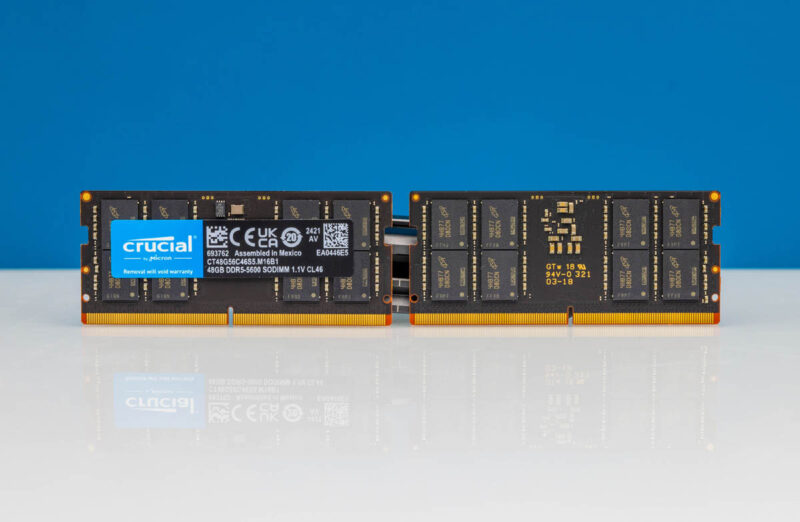
Here is the Crucial DDR5-6400 CSODIMM kit that is 2x 16GB. Of course, there is a big difference on the right hand side since the 48GB modules have DRAM chips on the back, but if you look at the front, you will spot the difference.
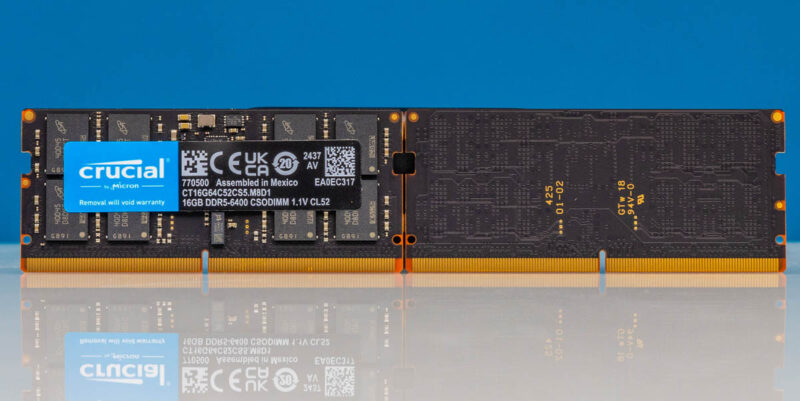
Here is a close-up of the front of the CSODIMM. You can see in the middle under the label that there is a Montage clock driver chip.
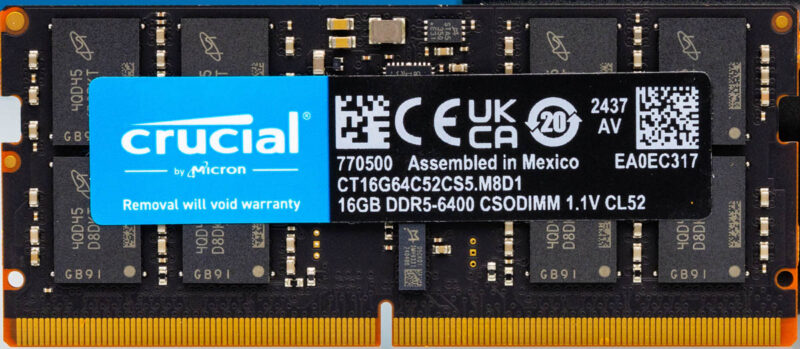
With the new clock driver DIMMs, you will see it on the label along with CSODIMM/ CUDIMM. Here is the CSODIMM package label.
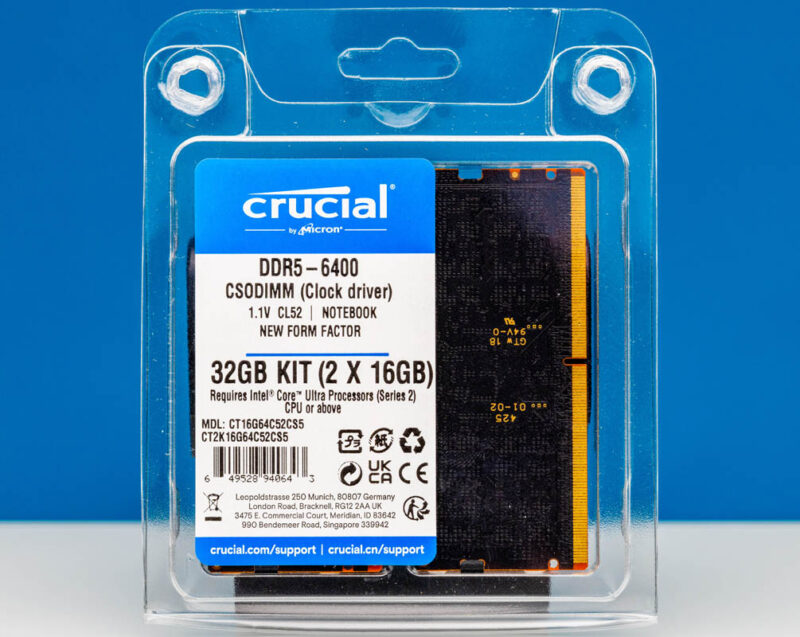
On the CUDIMM side, we do not have a normal DDR5 DIMM in the CMS stright-on, but here is the label side of a Micron ECC UDIMM.
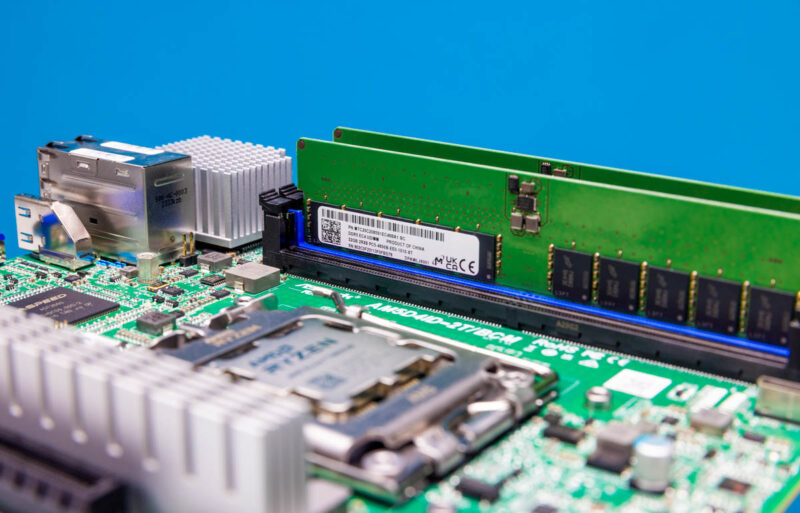
Here is the Crucial CUDIMM front and back.
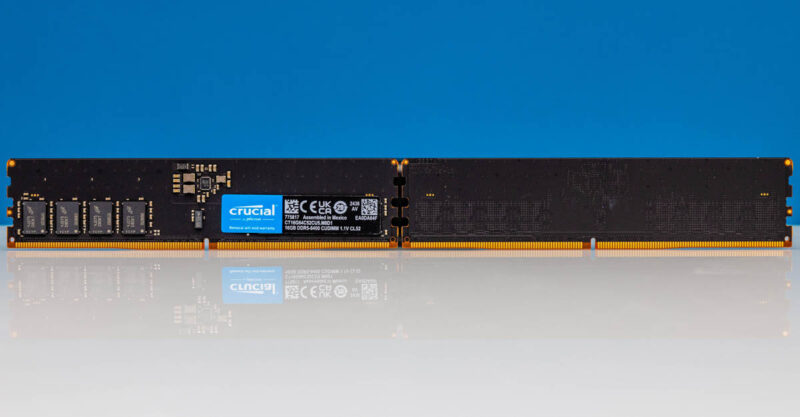
When we isolate the DIMM, we can again see the Montage clock driver in the center.

If you were thinking that the DDR5 RDIMMs used in servers have something similar there, you would be correct. Here is a shot from our Why DDR5 is Absolutely Necessary in Modern Servers piece:
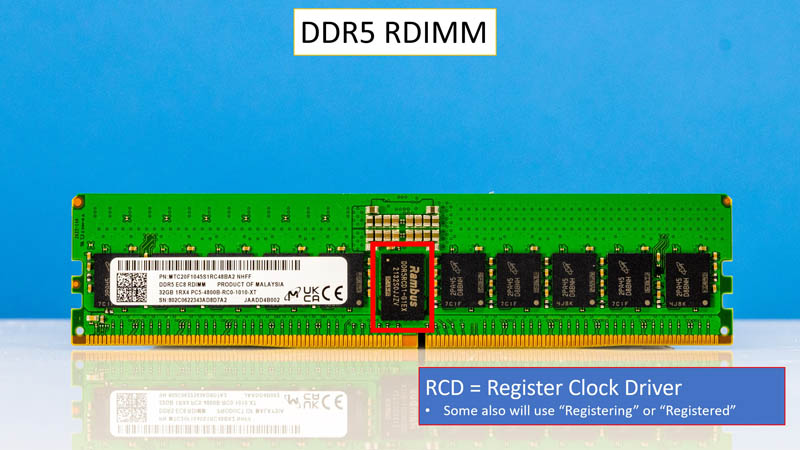
Of course, the CUDIMM is also labeled, along with the fact that you need Intel Core Ultra Processors Series 2 or newer to use them.
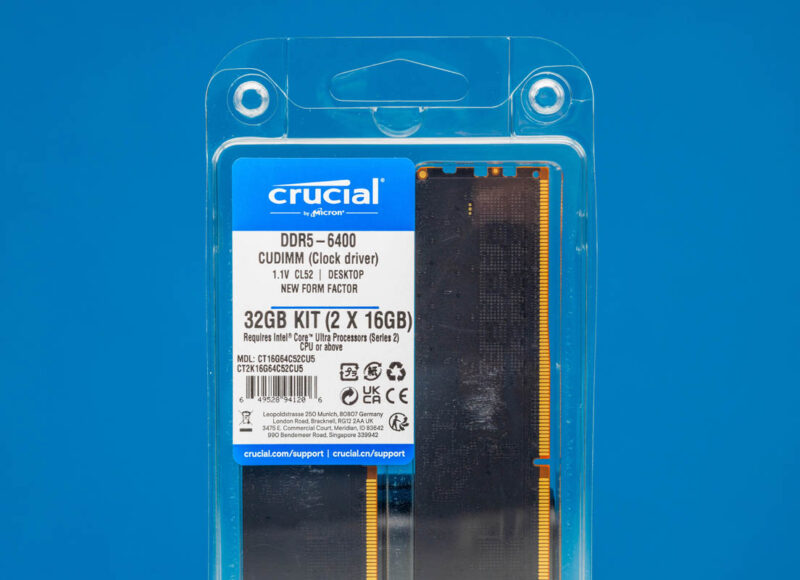
Most folks will still use non-CUDIMMs. In fact, we showed some non-CUDIMM DDR5-6400 Crucial Pro DDR5 memory in this week’s AMD Ryzen 7 9800X3D Launch article.
Final Words
Adding a clock driver for better clock integrity is nothing new. Servers have been doing something similar for years. Still, as we get to higher memory speeds, this is something we will see more of. One of the reasons UDIMMs historically have not had clock drivers is because it is an extra component that adds cost. In the DDR5 generation, the memory vendors are likely happy since they added the PMICs as well as in many cases the clock drivers. In the tug-o-war between memory modules and the CPUs and motherboards, the DDR5 memory vendors are winning extra components being placed on their modules.

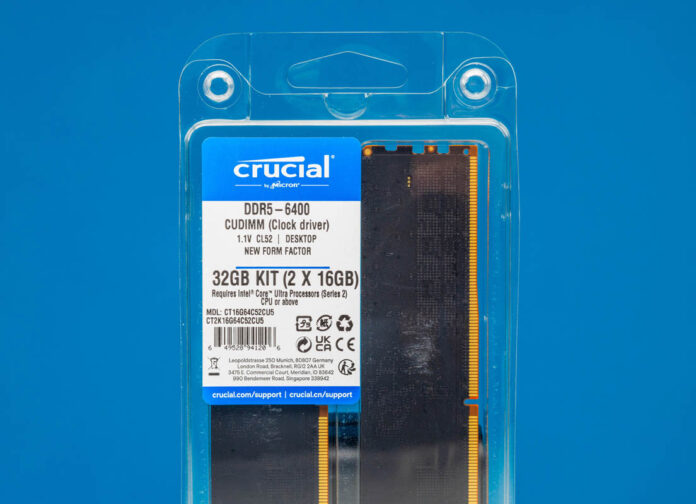



My understanding, it is Client Clock Driver (CKD), which doubles clock frequency by 2.
For example, motherboard sends 3200 MHz (equivalent) clock to the memory module and CKD outputs 6400 MHz (equivalent) clock using PLL.
This is actually pretty interesting – I work in IT and didn’t realize they were bringing server memory tech to consumer hardware now. Makes total sense though with how fast DDR5 is getting. Those comparison photos really help show the difference – that Montage clock driver chip is pretty obvious once you know what to look for!
I had to laugh a bit at the “memory vendors are winning” comment at the end. Like, of course they’re happy – they get to charge more for these fancy new modules with extra components. But I guess if we want those sweet DDR5-6400 speeds, we gotta pay to play.
One thing I’m curious about though – they mention you need Intel Core Ultra Series 2 or newer. Wonder how much of a performance difference these CUDIMMs actually make in real-world use compared to regular DDR5? Would love to see some benchmarks comparing them.
Pretty solid technical write-up though. Nice to see server tech trickling down to consumer hardware as speeds keep pushing higher.
Yamamoto, sorry, it’s just a clock repeater (with a pll), even has a bypass mode for those ddr phys that dont support the new clock termination requirements.This article is kind of dumb, like AI wrote it.
The idea is to potentially reduce cock jitter at the dram, for those phys that can take advantage of the pll modes, so there is more overall s/h margin for clock dqs /clock dq ac timing requirements.
The good thing about ckdimmn isn’t necessarily the ckd buffer, but that the higher frequencies require better raw cards. The raw cards in turn have more layers, better materials, and a bit bigger cost -which yield higher supported bandwidths.
Reduced clock* jitter for* the dram